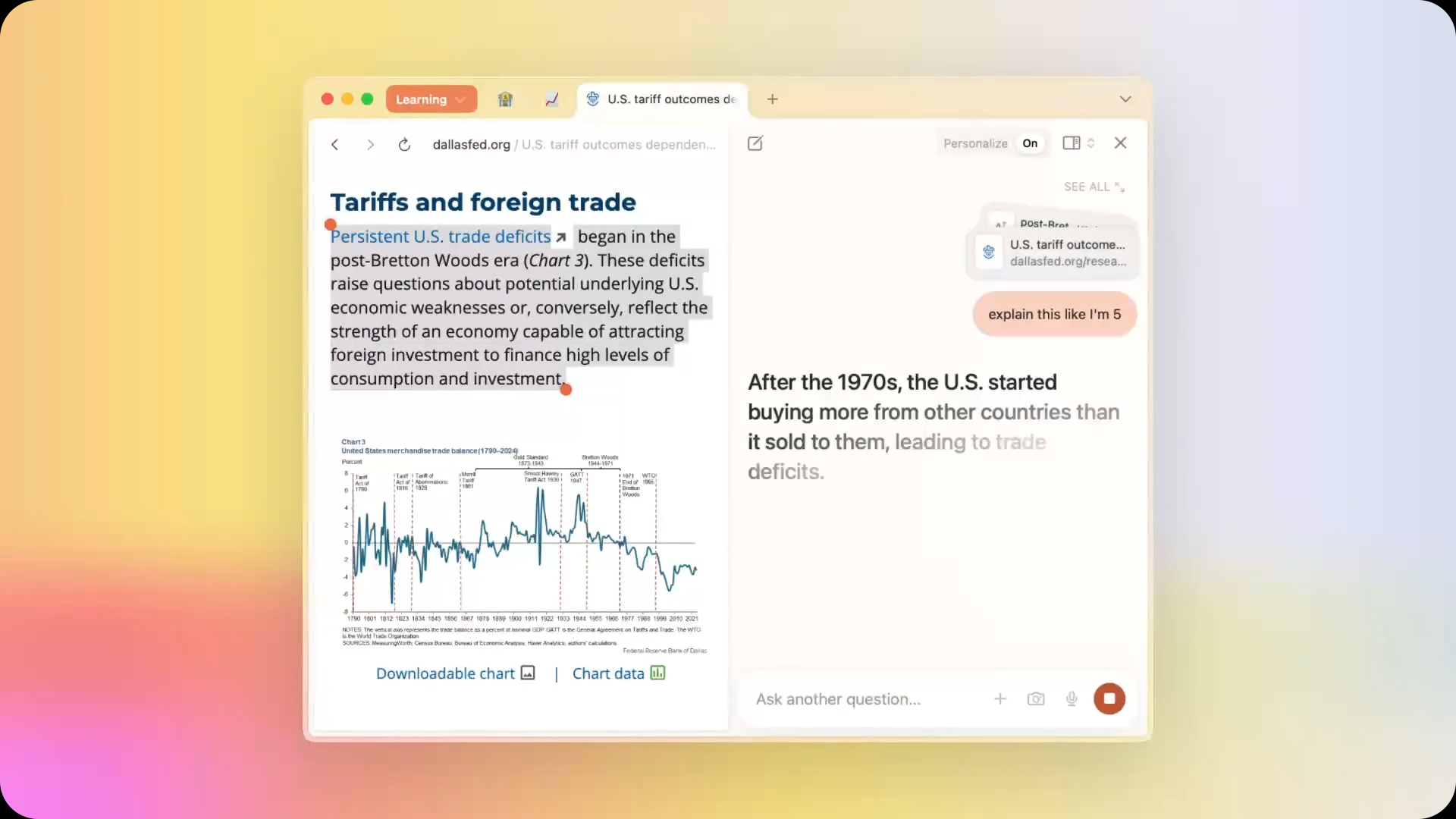SEO for Devtools: Ranking When Your Audience Lives on GitHub, Not Google
1. Why Devtool SEO is a Different Game Traditional SEO advice—“write long-form content,” “target high-volume keywords,” “optimize for featured snippets”—often misses the mark when your ideal users are developers. This audience doesn’t search like consumers or even B2B buyers. They don’t Google “top API management platforms”; they Google error messages, GitHub issues, or curl commands. And if they do land on your site, they want fast access to documentation — not a landing page written like a sales brochure. Developer search behavior is problem-first, not product-first. That’s why devtool SEO needs to reflect not just what the product does, but how it solves specific technical problems in context. “One of the biggest mistakes I see in developer marketing is assuming devs will read your homepage like an investor pitch,” says Chris Engelbert, Developer Advocate at Hazelcast. “They don’t. They scan for signs that your tool fits into their workflow—and bounce fast if it doesn’t.” A devtool company that ranks isn’t necessarily the one with the biggest content budget—it’s the one that maps its SEO strategy to real developer workflows. Think tutorials, integration examples, benchmarks, GitHub READMEs with links back to your docs—not just gated PDFs or generic blog posts. 2. When GitHub Outranks Your Website If you're building devtools, there’s a good chance your GitHub repo ranks higher than your actual site for key queries. That’s not necessarily a bad thing—it proves developers are engaging with your product in a real, hands-on way. But if your GitHub README is the first touchpoint, you’re leaving valuable context and brand equity on the table unless it connects back to a structured, optimized site. “We treat the GitHub README as our alt-homepage,” says Sarah Dayan, Staff Engineer at Algolia. “It’s often the first thing developers read. So we write it like we’re onboarding someone right there—what it does, how to install it, how to get help.” Your SEO strategy should treat GitHub, DevDocs, Stack Overflow, and npm as part of your content ecosystem — not separate from it. Link back to relevant documentation pages. Mirror repo instructions with deeper guides on your own domain. Use canonical tags if syndicating content across dev platforms. And if your homepage still uses the title tag “Home” or you haven’t written alt text for your key feature GIFs — start there. 3. Why Great Technical Content Still Fails on Google You know the type of post: a deep-dive tutorial with real code, helpful examples, and insights straight from the product team. It’s the kind of thing developers love to bookmark. But when someone Googles the exact problem it solves, they never find it. That’s because writing for developers and writing for search engines are two different games. Most docs do a great job of explaining the product — but a poor job of being discoverable. Pages are titled “Overview” or “How It Works,” with no mention of the actual query a user might type. There’s no structured metadata, no semantic headings, no context. “Even brilliant technical content needs scaffolding,” says Natalie Dunbar, a senior UX content strategist. “Think about how someone would discover it, not just how it reads.” What helps? Start by using real user questions as titles. Add links to related concepts across your site. Explain use cases early in the page. You don’t need to simplify the content — just surface it better. Good engineering deserves to be seen. 4. SEO People Don’t Know How GitHub Works — and Vice Versa It’s not uncommon for the SEO team to focus entirely on blog posts and landing pages… while devs are putting all the actual value on GitHub. Repos with 2,000+ stars, open-source SDKs, bleeding-edge changelogs — all sitting unindexed, unlinked, and completely absent from the main site. Meanwhile, marketing might be running a content campaign without realizing the product just launched v3.0 last week. No mention of it in search, no update to meta tags, and the doc that explains it all? It lives in a README file five clicks deep. “We see this disconnect constantly,” says Tom Critchlow, strategy consultant and creator of the SEO MBA. “The marketing site and the product surface are often treated like separate entities — and that’s a visibility killer.” Bridging the gap starts with awareness. If you’re an SEO, subscribe to your engineering team’s changelog. If you’re a dev, loop marketing into your GitHub releases. Better yet, unify both in a shared roadmap or planning doc. The more your product surfaces are connected, the more search engines (and users) understand your ecosystem. 5. Real-World Examples: What “Dev-Friendly SEO” Actually Looks Like Let’s break down what actually works when you’re targeting developers: API reference pages that rank. Stripe’s docs are SEO gold. Every endpoint has a unique URL, clean H1, short meta description, and consistent URL pattern

1. Why Devtool SEO is a Different Game
Traditional SEO advice—“write long-form content,” “target high-volume keywords,” “optimize for featured snippets”—often misses the mark when your ideal users are developers. This audience doesn’t search like consumers or even B2B buyers. They don’t Google “top API management platforms”; they Google error messages, GitHub issues, or curl commands. And if they do land on your site, they want fast access to documentation — not a landing page written like a sales brochure.
Developer search behavior is problem-first, not product-first. That’s why devtool SEO needs to reflect not just what the product does, but how it solves specific technical problems in context.
“One of the biggest mistakes I see in developer marketing is assuming devs will read your homepage like an investor pitch,” says Chris Engelbert, Developer Advocate at Hazelcast. “They don’t. They scan for signs that your tool fits into their workflow—and bounce fast if it doesn’t.”
A devtool company that ranks isn’t necessarily the one with the biggest content budget—it’s the one that maps its SEO strategy to real developer workflows. Think tutorials, integration examples, benchmarks, GitHub READMEs with links back to your docs—not just gated PDFs or generic blog posts.
2. When GitHub Outranks Your Website
If you're building devtools, there’s a good chance your GitHub repo ranks higher than your actual site for key queries. That’s not necessarily a bad thing—it proves developers are engaging with your product in a real, hands-on way. But if your GitHub README is the first touchpoint, you’re leaving valuable context and brand equity on the table unless it connects back to a structured, optimized site.
“We treat the GitHub README as our alt-homepage,” says Sarah Dayan, Staff Engineer at Algolia. “It’s often the first thing developers read. So we write it like we’re onboarding someone right there—what it does, how to install it, how to get help.”
Your SEO strategy should treat GitHub, DevDocs, Stack Overflow, and npm as part of your content ecosystem — not separate from it. Link back to relevant documentation pages. Mirror repo instructions with deeper guides on your own domain. Use canonical tags if syndicating content across dev platforms.
And if your homepage still uses the title tag “Home” or you haven’t written alt text for your key feature GIFs — start there.
3. Why Great Technical Content Still Fails on Google
You know the type of post: a deep-dive tutorial with real code, helpful examples, and insights straight from the product team. It’s the kind of thing developers love to bookmark. But when someone Googles the exact problem it solves, they never find it.
That’s because writing for developers and writing for search engines are two different games. Most docs do a great job of explaining the product — but a poor job of being discoverable. Pages are titled “Overview” or “How It Works,” with no mention of the actual query a user might type. There’s no structured metadata, no semantic headings, no context.
“Even brilliant technical content needs scaffolding,” says Natalie Dunbar, a senior UX content strategist. “Think about how someone would discover it, not just how it reads.”
What helps? Start by using real user questions as titles. Add links to related concepts across your site. Explain use cases early in the page. You don’t need to simplify the content — just surface it better. Good engineering deserves to be seen.
4. SEO People Don’t Know How GitHub Works — and Vice Versa
It’s not uncommon for the SEO team to focus entirely on blog posts and landing pages… while devs are putting all the actual value on GitHub. Repos with 2,000+ stars, open-source SDKs, bleeding-edge changelogs — all sitting unindexed, unlinked, and completely absent from the main site.
Meanwhile, marketing might be running a content campaign without realizing the product just launched v3.0 last week. No mention of it in search, no update to meta tags, and the doc that explains it all? It lives in a README file five clicks deep.
“We see this disconnect constantly,” says Tom Critchlow, strategy consultant and creator of the SEO MBA. “The marketing site and the product surface are often treated like separate entities — and that’s a visibility killer.”
Bridging the gap starts with awareness. If you’re an SEO, subscribe to your engineering team’s changelog. If you’re a dev, loop marketing into your GitHub releases. Better yet, unify both in a shared roadmap or planning doc. The more your product surfaces are connected, the more search engines (and users) understand your ecosystem.
5. Real-World Examples: What “Dev-Friendly SEO” Actually Looks Like
Let’s break down what actually works when you’re targeting developers:
API reference pages that rank. Stripe’s docs are SEO gold. Every endpoint has a unique URL, clean H1, short meta description, and consistent URL pattern (/docs/api/charges/create). Search “Stripe create charge” — they own the SERP. That’s not luck. That’s structure.
Blog posts with real code. Vercel’s engineering blog routinely ranks because it solves real problems. Their posts don’t just say “improve performance”—they benchmark with charts, link to GitHub, and include code blocks devs can copy-paste. That’s how you earn backlinks and shares.
Versioned docs that don’t fragment SEO. MongoDB keeps older versions of its documentation accessible without killing the SEO of the main docs. Canonical tags, internal linking, and redirects are all handled properly.
“Dev audiences don’t engage like consumers. They search for error messages, specific functions, or edge-case use cases,” says Brodie Clark, an independent SEO consultant. “You need your technical documentation and changelogs to be indexed and optimized like real content — not an afterthought.”
“One of the key things we’ve learned,” adds Andrew Romanyuk, CMO at Pynest, “is that ranking technical content starts with earning developer trust. That means less fluff, more clarity, and always aligning copy with how engineers describe the feature — not just how marketers do.”
In short: treat docs, GitHub releases, changelogs, SDKs, and tutorials as core SEO content. Not just “technical extras.”
6. Developer Trust Signals: Beyond Backlinks and Keywords
Most SEO playbooks obsess over backlinks—but in dev-focused markets, the trust comes from different signals:
- GitHub stars and contributor activity. If your SDK has 5,000 stars and regular commits, that’s a form of social proof that Google does pick up on—especially when your repo is linked from the official docs or product pages.
- Stack Overflow mentions. When your library or API gets referenced in Stack Overflow threads, it not only boosts credibility—it often leads to highly relevant referral traffic and sometimes even sitelinks in search.
- Changelogs and release notes. Updating your /changelog with each release and linking to it from product and support pages helps Google understand site freshness. It’s also a signal of active development, which developers care about—and Google increasingly does too.
“For devtools, SEO isn’t just about keywords—it’s about authority within technical communities,” explains Talia Wolf, conversion expert and speaker. “Search engines can now pick up on cues like GitHub activity, technical backlinks, and structured docsets. And developers can smell BS a mile away, so trust matters more than ever.”
In practice, this means marketing and DevRel need to be aligned. A developer-written post that earns 200 stars on Hacker News will have more long-term SEO value than a 1,000-word listicle about trends.
7. Bridging Marketing and DevRel: Who Owns SEO for Developers?
In most developer-focused companies, SEO falls into a no man’s land. Marketing teams speak in CTAs and conversion funnels; DevRel teams speak in code snippets and SDK use cases. But when your product lives in the terminal or integrates via API, neither team can succeed in isolation.
To rank for developer queries like “how to stream logs from Kubernetes” or “Next.js auth with JWT,” the content must be both technically accurate and search-optimized. That’s where cross-functional alignment is key.
“You can’t outsource technical credibility,” says Phil Leggetter, former Head of DevRel at Ably. “If your SEO strategy doesn’t involve the people building and using the product, you’ll miss what developers actually search for—and care about.”
Some orgs solve this by embedding SEO writers inside DevRel; others assign product marketers to specific engineering teams. What matters most is that someone owns the technical intent behind search—not just the keywords.
8. Tying Dev SEO to Product Metrics
Most developer SEO efforts die in the void between traffic and activation. Teams chase impressions or backlinks, but forget to ask: Did this content bring qualified users into our product?
Developer-facing content should be measured not just by rankings, but by its proximity to product value. For example, if your platform offers a streaming API, the success metric for an SEO article about “WebSocket alternatives” isn’t just pageviews—it’s how many readers sign up and create a stream.
“We treat SEO like product onboarding,” explains Ilya Grebnov, Technical Content Lead at Grafana Labs. “Each article should move the reader closer to trying the product—whether that’s cloning a repo or pasting a command.”
Use product analytics tools like PostHog, Segment, or Amplitude to track what content drives signup, usage, or activation. Marrying search intent with usage data is how dev tools build compounding, qualified growth.
8. Be Where Developers Actually Look
If you’re banking on your homepage or blog alone to bring in developer attention, you’re probably missing the mark. Most devs don’t start with Google—they start with GitHub, Reddit, Hacker News, or even package managers. That’s where discovery and trust really begin.
Some of the smartest teams publish directly in the channels their users frequent. Supabase, for example, treats their GitHub changelog like a product blog. Others, like PostHog, write long-form updates in their docs—not just for SEO, but because that’s where their community lives.
“We’ve learned that if a feature isn’t visible where developers actually hang out, it might as well not exist,” says Tara King, a developer relations strategist. “Being present on GitHub or in issues often does more than polished product marketing.”
To win developer attention—and long-term loyalty—you need to embed yourself in their ecosystem, not wait for them to stumble onto your landing page.








































































![Apple Shares Teaser Trailer for 'The Lost Bus' Starring Matthew McConaughey [Video]](https://www.iclarified.com/images/news/97582/97582/97582-640.jpg)















































































































_Marek_Uliasz_Alamy.jpg?width=1280&auto=webp&quality=80&disable=upscale#)























































































![Top Features of Vision-Based Workplace Safety Tools [2025]](https://static.wixstatic.com/media/379e66_7e75a4bcefe14e4fbc100abdff83bed3~mv2.jpg/v1/fit/w_1000,h_884,al_c,q_80/file.png?#)



























![[The AI Show Episode 152]: ChatGPT Connectors, AI-Human Relationships, New AI Job Data, OpenAI Court-Ordered to Keep ChatGPT Logs & WPP’s Large Marketing Model](https://www.marketingaiinstitute.com/hubfs/ep%20152%20cover.png)




































































































![[DEALS] Microsoft Visual Studio Professional 2022 + The Premium Learn to Code Certification Bundle (97% off) & Other Deals Up To 98% Off](https://www.javacodegeeks.com/wp-content/uploads/2012/12/jcg-logo.jpg)
































































.jpg?width=1920&height=1920&fit=bounds&quality=70&format=jpg&auto=webp#)






-35-45-screenshot.png?width=1920&height=1920&fit=bounds&quality=70&format=jpg&auto=webp#)

-30-7-screenshot_0FxoE4J.png?width=1920&height=1920&fit=bounds&quality=70&format=jpg&auto=webp#)



































































